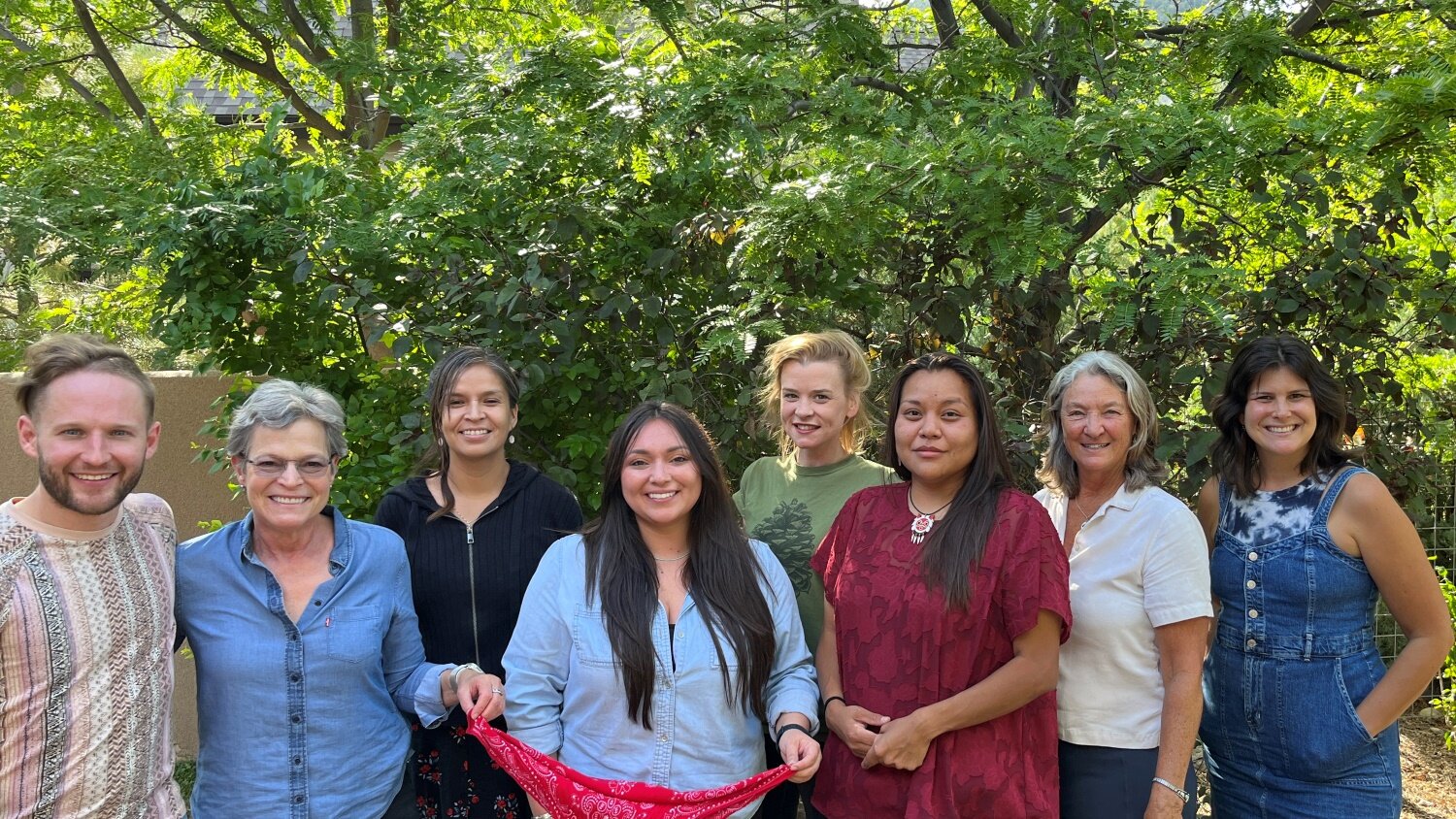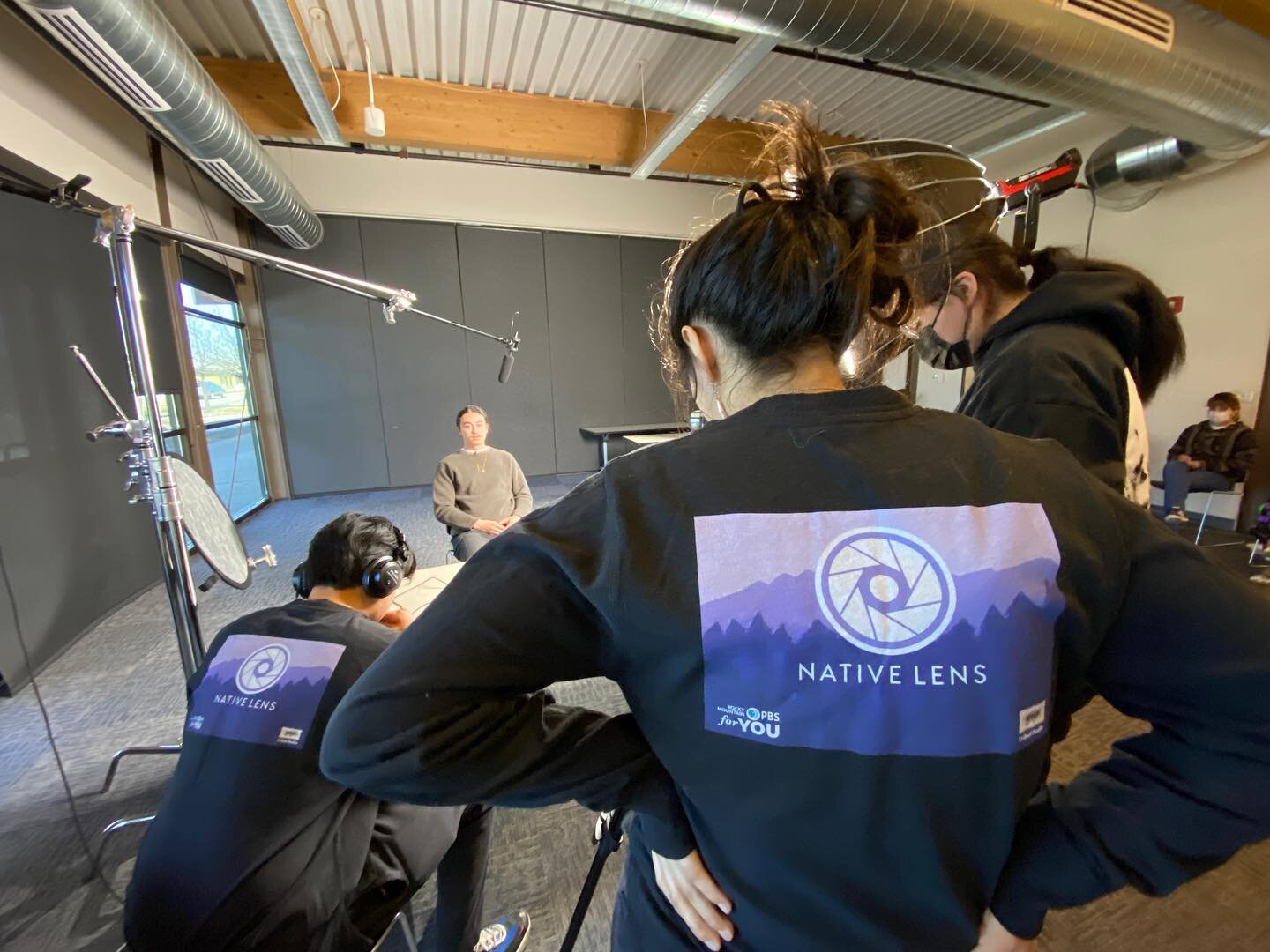Native Lens Media Fellowship returns for second year, amplifying Indigenous voices in film

DENVER — Native American characters are no stranger to the silver screen — but whether those characters are representative is another story.
Though Native Americans first appeared in films dating back to the late 1890s, they were often depicted as aggressors — attacking wagon trains, settlers' cabins and armies — or dressed in little to no clothing, reinforcing inaccurate stereotypes. Films like Buffalo Dance and Sioux Ghost Dance — created by Thomas Edison’s first motion picture studio — did little to abolish the negative typecast of Native Americans as violent savages.
Today, Native Americans represent 1.6% of the population, and only 0.25% of onscreen speaking characters in films, according to a recent study by the USC Annenberg Inclusion Initiative. Only 99 of the 133 Native American roles in top movies over the last 16 years were played by Native Americans. Behind the scenes, representation remains just as low. Only 1.1% of television staff writers and just 0.8% of screenwriters were Indigenous across the 2019-2020 season, according to the 2021 Hollywood Diversity Report by UCLA.
One regional coalition of media professionals and educators is trying to shift inaccuracies in representation through first-person media. Native Lens was created in 2020 to highlight the work of Native American storytellers — and to combat centuries of stereotypes. The film project, hosted by KSUT Tribal Radio and Rocky Mountain PBS, amplifies Indigenous voices by showcasing films made and submitted by Indigenous people. To date, Native Lens has showcased over 38 films from North America in a mix of nonfiction and narrative storytelling.
To support more stories being told, Native Lens also launched a media fellowship and training program in 2022 for aspiring and established Indigenous storytellers . Through the Native Lens Media Fellowship, selected participants meet virtually for one month and then come together for one week in Durango to collaboratively film, produce and edit short films that center Indigenous experiences.

The Native Lens team met in August to determine priorities and plan for the year ahead. Pictured L-R: Alex Forsett, Director of Statewide Experiences and University Partnerships for Rocky Mountain PBS; Carol Fleisher, Executive Director for Durango Independent Film Festival; Crystal Ashike, Digital Content Editor and Digital Media Specialist for Native Lens and KSUT Tribal Radio; Charine Pilar Gonzales, Producer for Native Lens; Kate Perdoni, Engagement Journalism Director for Rocky Mountain PBS; Kree Lopez, Assistant Producer for Native Lens; Tami Graham, Executive Director for KSUT Public Radio; and Colleen Thurston, Project Coordinator for Native Lens.
Photo: Courtesy Native Lens
Rocky Mountain PBS caught up with Colleen Thurston, the project coordinator for Native Lens, over Zoom. This conversation has been edited for length and clarity.
Rocky Mountain PBS: What was the impetus for creating and launching Native Lens?
Colleen Thurston: Native Lens was envisioned and implemented in 2020 in response to the fact that film festivals were closing and there wasn't much of an outlet to see films or for Native filmmakers to share their films. At the same time, people throughout the world and country were experiencing loneliness, isolation and wanting to connect. Native Lens was built out of response to that to say to Indigenous people: Tell us your story. What are you experiencing now? What are you dealing with and what's important to you?
The fellowship program came out of our secondary mission to teach native filmmakers and aspiring native filmmakers how to best use video production and digital storytelling tools to tell their own stories.
RMPBS: Why is it important for Indigenous people to tell their own stories? What has happened in the past when others told their stories for them?
CT: Native people have been involved with filmmaking since the beginning of the industry, both in front of and behind the camera. But as we know, the industry really shifted towards these portrayals of native people that were incredibly harmful and stereotypical. In many cases, we were just used as plot devices or to further the narrative of manifest destiny and westward expansionism and frankly, genocide. So our stories have been manipulated. They have been told untruthfully and we have been portrayed in inauthentic ways.
Reclaiming our space onscreen and behind the camera is the first step in narrative change and narrative sovereignty. We have so many young people wanting to tell their own stories and we at Native Lens can step in and say: How can we support? What can we do to put cameras in the hands of people that want to tell their own stories and not perpetuate these myths of the past?
RMPBS: What are some of the barriers that Indigenous people face when it comes to telling their own stories and, more specifically, producing films?
CT: I don't want to generalize all Indigenous people, but I would say that for Indigenous people living in rural areas or on reservations, they might not have access to high-speed internet or filmmaking classes in high school. That's always a barrier in rural areas — that's not just specific to native communities.
In this day and age, the tools are out there — I think it's more just about giving people information about how best to use those tools. If you have YouTube and if you have access to a camera, even an iPhone, you can be a filmmaker. But what's the next step? We’ve noticed that there is no Indigenous-specific training that's readily available. There's a lot of training and resources for non-native people that want to work within Native communities — in fact, there's entire guides that have been put together for how best to do that. But for Native people who have been trained in filmmaking and digital storytelling — they’ve not necessarily been trained in an Indigenous way, and we're trying to fill that gap and provide Indigenous best practices.
RMPBS: Can you provide some examples of best practices for filming in Indigenous communities?
CT: A lot of people in the documentary industry follow certain journalism standards, one of those being that you shouldn't give gifts or compensate sources. In Indigenous society, gift giving is a part of daily interactions, and living in more reciprocal ways involves some sort of compensation. So while a journalist might say, ‘We can't pay somebody,’ from an Indigenous perspective, you might come to a different conclusion.
In another example, Brooke Swaney, our mentor who worked with the film fellowship last year, made a documentary that took place in the Lummi tribe in the Lummi Nation. Somebody she included on-screen passed away after the film was completed. In the Lummi cultural tradition, for a year after someone passes, all images of that person are put away. And so Brooke and her team went back and re-edited the documentary after it was completed and after it had premiered. They took out the scenes with that particular person because that was culturally the right and respectful thing to do.
These are the kind of considerations that we are weaving into production practices within Indian Country.

Fellows of the Native Lens Media Fellowship filming an interview on the Southern Ute reservation in Ignacio, Col.
Photo: Courtesy Native Lens
RMPBS: What has been the impact of Native Lens so far, both within Native American communities and outside of them?
CT: When we initiated the fellowship, Brooke Swaney, our fellowship mentor who did a lot of the planning, research and pre-production of the documentaries for our Native Lens Media Fellowship program, reached out to the Southern Ute tribe for story ideas. Since our fellowship program is located on Southern Ute land, Brooke went to the Southern Ute Tribe’s SunUte community center and asked if they had any initiatives or stories they would want to share. The contact there said they had an ice climbing program they started before the pandemic and hadn’t gotten out to do again in quite some time. They suggested convening another ice climbing expedition and filming it. That ended up being one of the two Native Lens Media Fellowship films.
Our contact at SunUte said that nobody had ever come to them wanting to tell a positive story before. They [outsiders] always had an idea for what they wanted to tell. And that's very indicative of what's happened throughout Indian country, especially in documentary film, but in narrative film as well. Outsiders have come in wanting to tell a particular story, and often it’s a story about the plight of the Native American: What are the hardships that we have faced — and not: What are the celebrations? What are we doing well? How are we resilient and how are our communities thriving?
That feedback reminded us at Native Lens why we're doing this work. We need those positive stories.
We have also gotten feedback from non-Native people saying they loved the stories we’ve shared. They noted the stories are full of joy — and remarked that they were not used to seeing Native people represented in this positive way. That’s what authentic representation looks like. It's the tears and trauma, but it’s also the joy and thriving cultural traditions and rich communities.
RMPBS: Where are last year’s cohort of film fellows now?
CT: A couple of them are working together on developing additional projects. That was one of the goals of the fellowship — to build community. Last year, we hosted fellows from within the four corners region of Colorado, New Mexico, Utah and Arizona with the hopes that our fellows would make new connections and build their own network of collaborators. It's been really cool to see a few of them working together post fellowship. Their films have shown at the Durango Independent Film Festival and the Ouray International Film Festival.
Some of them came in with just a general interest in film, and some of them are looking to build a career. One fellow had their first career film industry interview during the fellowship and then ended up going on to work as a production assistant on a major studio series.
RMPBS: Is there anything else you’d like to share about Native Lens?
CT: I would like to really emphasize that Native Lens [the series] and the Native Lens Media Fellowship are for people that both have experience in filmmaking and who don't. It really is open and we try to include that kind of diversity of experience within our programs.
Learn more about Native Lens here. To apply for the fellowship, fill out the application here. Applications are due Friday, December 15.
Andrea Kramar is an investigative multimedia journalist at RMPBS. andreakramar@rmpbs.org.